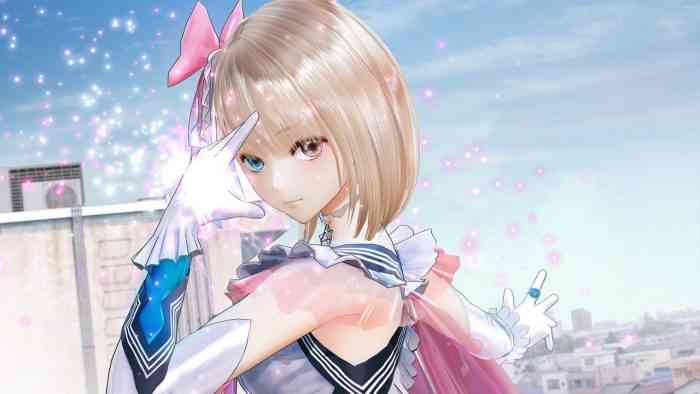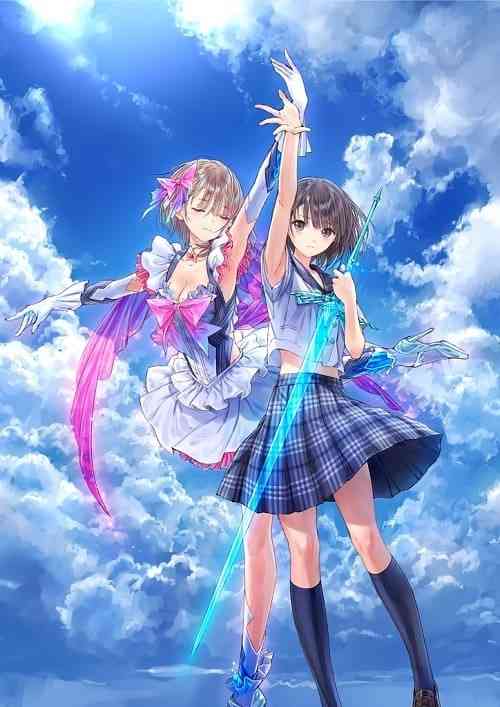Blue Reflection Review
Blue Reflection is the newest IP from the developers of the rather long-running Atelier series – a series known for its cute, innocent, and light-hearted adventures full of alchemy, turn-based battles, and forming bonds with the colorful cast of characters. While the staple formula for the Atelier games hasn’t drastically changed from one installment to another, their release of Nights of Azure was a step away from their comfort zone and showed potential in creating something other than the next installment in the Atelier series. As such, Blue Reflection takes quite a different turn in setting, characters, and overall story premise that shows to be a more intricate, deep, and dark in tone.
Blue Reflection stars the high school student Hinako Shirai as she discovers there’s more to her seemingly peaceful life than it seems. It all begins when she meets Yuzuki and Lime Shijo – twin sisters who grant Hinako her new found “Reflector” powers in an alternate world of humanity’s collective consciousness known as the Common. By interacting with her classmates, Hinako discovers their feelings and underlying concerns that causes her to leap into the Common and transform into a magical girl to listen, understand, as well as stabilize their overwhelming emotions in the form of Fragments. With each Fragment stabilized and demon slayed in the Common, Hinako, Yuzuki, and Lime become stronger as Reflectors and combat the unwarranted end of the world by the feared Sephirot. Just a girl solving her classmate’s problems one battle at a time, no biggy.
If you’re familiar with the magical girl genre with a dark twist (namely, the likes of Madoka Magica or Selector Infected Wixcoss), this resides within a similar realm with the whole “save the world as a power-wielding cute girl”. Aside from the three main musketeers Hinako, Yuzuki, and Lime, there are 15 other girls that act as main Fragment episodes and eventual support characters as you progress through the game. The story is rather intriguing with a handful of beautifully drawn characters each with their own goals, aspirations, and charm. The game is also not without fan service which is a given from Gust.

Gameplay has a similar structure to that of the Persona games in which, as a high schooler, you’re building bonds with various people, solving their problems, and get transported to an alternate world to fight demons. It’s not at all as in-depth or intricate but highly follows the same blueprint. The game progresses in chapters that largely begin by being given designated criteria from Yuzuki and Lime to complete the chapter amid other missions to complete at your leisure. You will leap into the Common at minimal once every chapter for the main Fragment episode, but more often than not you’ll be doing a lot of leaping between the Common and high school. Within the high school, you’ll have conversations and simple dialogue choices with characters when not tasked with stabilizing a Fragment. You can even go on dates or communicate with the main cast via the in-game social network to build a stronger bond with them to unlock bonuses and more events. While the maps are not very big, you have the option of fast traveling between rooms in the high school which saves quite a bit of time and hassle of running around.
When you’ve leaped out of the high school and into the Common, you’ll be battling the various demons that roam the area. The battles are turn-based that’s governed by a “timeline”. Taking in consideration the speed of characters and knockbacks made by certain moves, characters take turns depending on who reaches the center of the timeline first. Battle flow is like any other turn-based structure in which supportive or attack based actions can be taken that falls into the general categories of buffing, healing, physical, or elemental. While items oddly enough cannot be used within battles, there are two other special features for battles in Blue Reflection. The first is Ether Recharge in which the MP of a character is recovered and the second is Overdrive where two actions can be taken in a single turn if enough ether is accumulated within a battle. In addition, health is fully restored after battles for all characters in the party.
______________________________
“The art style of Blue Reflection is absolutely gorgeous and truly sets it apart from Gust’s other IPs.”
The battle mechanics are simple and straightforward in Blue Reflection and doesn’t truly present something new from the Atelier games. Crafting isn’t very useful and if anything, the battles are even easier and rather too easy. By having an Ether Recharge to refill your MP and health being restored fully after each battle, there is hardly any challenge present even on the hardest difficulty of the game. There is so much ease and leniency that it’s hard to be defeated in battles except for battles siding with a power in numbers approach. Another unfortunate aspect of Blue Reflection is the lack of party customization and utilization of the 15 other main characters in the game. From beginning to end, your battle team will be Hinako, Yuzuki, and Lime with 4 equipable supports for each. Thus, the inability to have even just a few other girls to be active party members (instead of just equipable supports) is a letdown as some of them are much more interesting that deserve the spotlight and further development. But of course, like the majority of Gust’s games (if not all) the battles aren’t truly the meat of the game, but more so the interactions between the cast of characters. Nonetheless, battles are still oddly amusing in terms of demon designs and animations within but just doesn’t pose any real challenge.
When battles are completed and the party levels up, each of the three girls have their own stats to allocate and abilities to obtain allowing you to mold a team that fits your play style. Also, Fragments collected from the Common can be equipped to moves giving them additional bonuses or perks. This is a rather rewarding system that truly lets you customize how you want each character to play and what they specialize in. In a way, this feeds into the amusement with battles even though they are seamless to finish, it’s obtaining new abilities to utilize and apply that keeps it entertaining.

If there’s anything I can praise immensely but also feel bothered by at the same time, it’s the visuals. The art style of Blue Reflection is absolutely gorgeous and truly sets it apart from Gust’s other IPs. Characters, demons, environmental, and UI/menu designs are superb and I couldn’t help but be in awe over it. However, lack of rich animation and occasional graphical stutters were awkward at times. This was evidently due to production value and time spent on the game within the animation department since everything else felt like it achieved what it was set out to do. The music was also great to jam out to and did a great job in setting the tone for the various events in the game.
Gust’s attempt at creating a brand new world with Blue Reflection shows. The development team brought innovation to the table demonstrating they can step outside their comfort zone. However, production value and time may have hurt the project as the game suffers from random graphical stutters, a lack of rich animation, and a failure to utilize the entire cast of characters. Nonetheless, the party customization, character interactions, art style, and overall design is admirable and keeps things entertaining. It’s an enjoyable game with a terrific concept and is one that should be played slowly so you can really enjoy the characters, as well as a beautiful art style.
*** PS4 code provided by the publisher ***
The Good
- Art style
- Party customization
- Cast of characters
- Intriguing Story
The Bad
- Failure in utilizing entire cast of characters
- Graphical stutters
- Lack of animation

